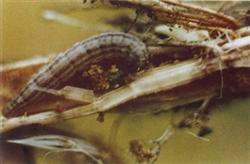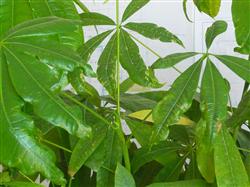How to raise a rich tree?

How to raise a rich tree? Please introduce Malama chestnut, also known as melon chestnut, rich tree. It is a small evergreen tree of the kapok family. Originally from Mexico, Costa Rica. Leaves palmate, leaflets 7-11, oblong to Obovate. There are horticultural varieties, flowers and leaves, rich trees. Because the name of the rich tree is welcomed by businessmen and the general public, with beautiful shape, bright green leaves and hammer-shaped trunk, it is suitable for layout and beautification at home, so it has developed rapidly in China's flower market in recent years. During festivals, hotels, restaurants, businesses and citizens scramble to buy more for good luck. Main points of culture: 1. Temperature. The lowest temperature in winter is 16-18 ℃, below which the leaves turn yellow and fall off, and when the temperature is below 10 ℃, it is easy to die. 2. Light. The rich tree is a strong positive plant, which is planted in open field in Hainan Island and other places. However, the plant has a strong ability to tolerate shade and can enjoy it continuously for 2-4 weeks in places with weak indoor light. And then put it in a place with strong light. 3. Water. There should be sufficient moisture in the high temperature growing period, but the drought tolerance is strong, and it will not be harmed if it is not watered for several days. But avoid stagnant water in the basin. Reduce watering in winter. 4. Air temperature. The growth period likes the higher air temperature; can often spray a small amount of water to the leaf surface. 5. Change the basin. The basin can be changed in spring as needed. Hand tree, commonly known as wealth tree, is an evergreen shrub or small tree of the genus Araliaceae, with erect stems, alternate leaves, long stalks, palmately compound leaves, 12 leaflets, 12-15 cm long and 6 cm wide. Because of its peculiar tree-shaped leaf shape, commonly known as auspicious, and because of its good luck, more and more people have been introduced recently. This flower is native to Australia and some islands in the Pacific Ocean. It is suitable for warm, moist, ventilated and well-ventilated environment. It grows best in loose, fertile and well-drained soil. Potted rich trees should change their pots once in 1-2 years, when they leave the house in spring, and prune yellow leaves and weak branches to promote them to germinate new shoots. Watering should follow the principle of wet between dry and dry. In spring and autumn, watering is dense according to the weather, such as sunny, rainy, dry and wet, generally once a day, when the temperature exceeds 35 ℃, at least twice a day, fertilizing twice a month in the growing season, and spraying water for new leaves to maintain high environmental humidity; shade should be carried out from June to September to maintain 60% to 70% light transmittance or placed in a place with bright scattered light. After entering the room in winter, the temperature should not be lower than 5 ℃, it is better to keep it at about 10 ℃, water it once every 5-7 days, and ensure sufficient light. In addition, in the growing season, such as poor ventilation, prone to red spiders and shell insects, should pay attention to observation. Insect pests should be caught or sprayed in time. The rich tree can be propagated by sowing or cutting, and the seeds should be sowed immediately after harvest; the cuttings can be cut from May to June, and the cuttings can be cut into sand or steep rocks, pay attention to shading and moisturizing, and can take root in about a month. Click to get more money tree culture methods click to get more flower planting methods
- Prev

What is rice stem borer and how to control it?
What is rice stem borer and how to control it? Please introduce and control the rice stem borer, Chilo suppressalis. It is distributed in the rice areas of southern and northern China. Host rice, corn, sugar cane, millet, broad bean, Zizania caduciflora, sorghum, rape, wheat, Ziyunying and so on. The damage caused by the pest is still serious in recent years. ...
- Next

What diseases and insect pests should be prevented from growing rich trees?
What diseases and insect pests should be prevented from growing rich trees? Please give an introduction to the prevention and control methods. The following two common disease prevention and control methods for raising rich trees are for reference: First, root (stem) rot This is a common disease that seriously harms rich trees, also known as rot. Control methods: (1) keep the cultivation environment dry, pay attention to planting...
Related
- Fuxing push coffee new agricultural production and marketing class: lack of small-scale processing plants
- Jujube rice field leisure farm deep ploughing Yilan for five years to create a space for organic food and play
- Nongyu Farm-A trial of organic papaya for brave women with advanced technology
- Four points for attention in the prevention and control of diseases and insect pests of edible fungi
- How to add nutrient solution to Edible Fungi
- Is there any good way to control edible fungus mites?
- Open Inoculation Technology of Edible Fungi
- Is there any clever way to use fertilizer for edible fungus in winter?
- What agents are used to kill the pathogens of edible fungi in the mushroom shed?
- Rapid drying of Edible Fungi

